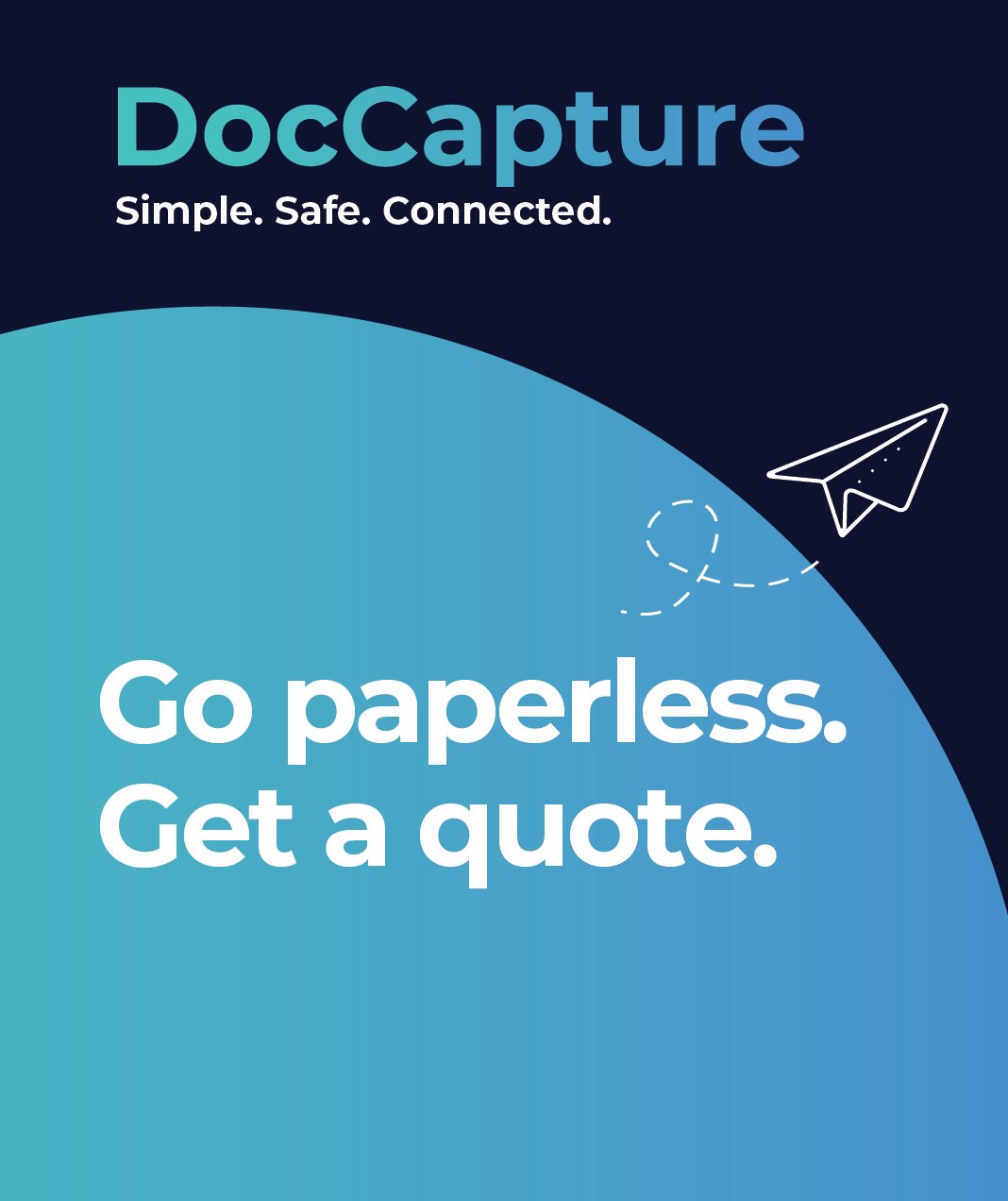The Future of HR: Adopting Digital Solutions for Compliance and Security
Table of contents
The HR landscape is rapidly evolving, and keeping up with regulatory requirements can feel overwhelming. From managing sensitive employee records to meeting compliance standards like GDPR or HIPAA, HR teams face the constant pressure of staying organized and secure. Digital HR compliance solutions, particularly document scanning, offer a smarter way to handle these challenges. By digitizing and automating compliance processes, organizations can simplify workflows, enhance security, and cut costs—all while staying within regulatory guidelines.
The Importance of Compliance in HR Operations
Compliance is a cornerstone of HR operations, ensuring that businesses adhere to labor laws, data protection standards, and industry-specific regulations. Failing to meet these requirements can lead to steep fines, legal action, and damage to an organization’s reputation. For HR professionals, this often means juggling complex tasks like maintaining up-to-date employee records, managing payroll data, and ensuring policy adherence.
Consequences of Non-Compliance
When compliance gaps occur, the repercussions can be significant. Examples include:
- Financial Penalties: Regulatory bodies like the Department of Labor or GDPR enforcement agencies impose hefty fines for violations.
- Legal Issues: Non-compliance can lead to lawsuits from employees or government entities.
- Reputational Damage: A compliance breach can erode trust among employees, stakeholders, and customers.
Digital HR compliance solutions provide an answer to these challenges. They not only help organizations stay within legal boundaries but also bring order and efficiency to compliance-heavy tasks. Document scanning, for instance, allows companies to digitize physical records, making them easier to store, access, and secure. Learn more about HR Document Scanning and its role in maintaining compliance.
How Document Scanning Enhances Efficiency and Security
Document scanning is more than just converting paper files into digital formats—it’s a powerful tool for improving HR operations. By implementing a comprehensive scanning process, HR departments can streamline workflows, bolster data security, and address compliance requirements with greater ease.
Streamlining Record-Keeping
One of the biggest challenges for HR teams is managing vast amounts of paperwork. Contracts, payroll records, training certifications, and employee evaluations can quickly pile up. Document scanning simplifies this by digitizing these records and organizing them into centralized systems. This makes retrieving files faster and reduces the risk of lost or misplaced documents. For tips on creating an efficient digital system, check out Digital Record-Keeping for Human Resources.
Enhancing Data Security
Compliance isn’t just about keeping records—it’s about protecting them. Digital scanning enhances security by enabling features like encryption, access controls, and secure backups. These measures help HR departments meet the requirements of regulations like GDPR and HIPAA. Unlike physical files, which can be lost, stolen, or damaged, digital files are easier to secure and track.
Meeting Regulatory Frameworks
Whether it’s adhering to GDPR’s data privacy rules or the document retention requirements outlined by the Department of Labor, compliance standards often dictate how records must be stored, accessed, and shared. Document scanning ensures that digital records are organized and compliant with these frameworks. Learn more about the specific retention requirements in the 2023 Guide to HR Document Retention Requirements.
Cost-Saving Benefits of Adopting Digital HR Compliance Solutions
Adopting digital HR compliance solutions, such as document scanning, isn’t just about improving workflows—it’s also a smart financial decision. While the initial investment may seem daunting, the long-term cost savings often far outweigh the upfront expenses. Here’s how these solutions make financial sense for HR departments.
Reducing Physical Storage Costs
Maintaining physical records requires storage space, which translates into ongoing costs for filing cabinets, secure rooms, or even off-site facilities. Digital document scanning eliminates the need for physical storage, allowing companies to reallocate those resources to more strategic initiatives.
Cutting Administrative Overheads
Manual processes like filing, retrieving, and updating records consume valuable time and labor. By digitizing these tasks, HR teams can focus on higher-value activities, reducing the need for additional administrative staff or overtime expenses. Automated systems also decrease the likelihood of costly errors caused by manual data entry.
Minimizing Legal Risks and Penalties
Non-compliance with regulatory frameworks can result in hefty fines and legal expenses. Digital solutions make it easier to adhere to these requirements, reducing the risk of financial penalties. For example, by ensuring timely and accurate record-keeping, companies can demonstrate compliance during audits or investigations.
Scaling Cost-Effectively
As organizations grow, so does the volume of HR records. Scaling a digital system is far more cost-efficient than expanding physical storage or hiring additional staff. A well-implemented document scanning solution can handle increasing volumes without significantly increasing costs. For further insights into streamlining HR processes, visit Document Scanning Services for HR Departments.
Success Stories: Digital HR Compliance in Action
Real-world examples demonstrate how digital HR compliance solutions can transform operations. Here are two case studies showcasing the tangible benefits of document scanning and digital transformation in HR.
Improving Compliance and Efficiency at a Manufacturing Firm
A mid-sized manufacturing company struggled to keep up with regulatory audits due to disorganized employee records stored across multiple locations. Each audit required significant time and resources to gather and verify the necessary documents.
Solution: The company adopted a document scanning system to centralize employee files in a secure, searchable database. This allowed HR staff to access records instantly and ensured compliance with retention laws like the Department of Labor's requirements.
Results:
- Audit preparation time was reduced by 70%.
- Compliance gaps were eliminated, preventing potential fines.
- HR staff saved 15 hours per week, reallocating time to strategic initiatives.
Securing Employee Data in a Healthcare Organization
A healthcare provider faced challenges meeting HIPAA requirements for securing employee and patient records. Paper files posed a risk of unauthorized access, and disaster recovery plans were inadequate.
Solution: By implementing document scanning and encrypted digital storage, the organization ensured all records were stored securely and backed up regularly. Access controls were also introduced to limit data visibility to authorized personnel.
Results:
- Compliance with HIPAA was achieved with zero incidents during subsequent audits.
- Data retrieval time improved by 50%, increasing HR team productivity.
- Storage costs decreased by 40% due to the elimination of physical records.
For more examples of how digital transformation impacts HR, explore Digital Transformation in HR.
Conclusion
Navigating HR compliance doesn't have to be a challenge. By leveraging digital HR compliance solutions like document scanning, your organization can simplify regulatory adherence, enhance data security, and cut costs. Whether you’re managing GDPR, HIPAA, or other frameworks, a digital approach ensures that your records are organized, accessible, and secure.
Ready to transform your HR operations? Fill out our “Get a Quote” form to explore how document scanning and digital solutions can meet your compliance needs and elevate your processes. Let’s streamline your HR compliance together.
Share this
You May Also Like
These Related Stories

Reducing Operational Costs in HR with Document Scanning

Navigating GDPR and HIPAA: The Role of Digital Document Management

